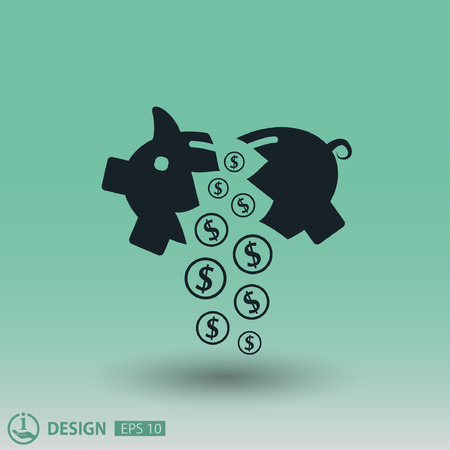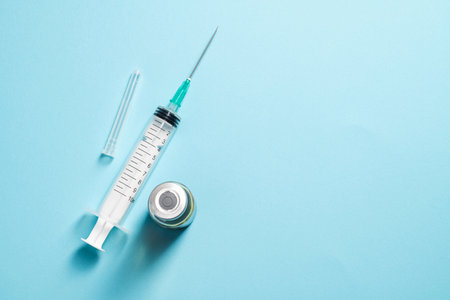The Cost of Pet Healthcare Without Vaccination
Many pet owners may not realize just how expensive it can be to treat preventable diseases. While skipping vaccinations might seem like a way to save money in the short term, the reality is that treating illnesses that vaccines could have prevented often costs significantly more. Below, we’ll explore some of the most common preventable diseases and their potential treatment costs.
Common Preventable Diseases and Treatment Costs
Vaccines protect pets from several serious illnesses that can lead to expensive treatments, prolonged suffering, and even death. Here’s a look at some of the most common preventable diseases and what it might cost to treat them if your pet becomes infected:
| Disease | Potential Treatment Cost | Symptoms and Risks |
|---|---|---|
| Parvovirus (Dogs) | $1,000 – $5,000 | Severe vomiting, diarrhea, dehydration, and potentially fatal complications. |
| Canine Distemper | $500 – $2,000+ | Coughing, fever, seizures, neurological damage. |
| Bordetella (Kennel Cough) | $200 – $1,000 | Persistent cough, respiratory distress. |
| Rabies | $3,000+ (Quarantine or euthanasia may be required) | Aggression, paralysis, fatal once symptoms appear. |
| Feline Leukemia Virus (FeLV) | $500 – $1,500 per year | Anemia, immune suppression, cancer risk. |
| Feline Panleukopenia (Feline Distemper) | $1,000 – $3,000 | Lethargy, vomiting, severe dehydration. |
The Financial Burden of Treatment vs. Prevention
Treating these diseases often requires hospitalization, intensive care, and long-term medical attention—all of which add up quickly. In contrast, routine vaccinations generally cost between $50 and $200 per year depending on the type of vaccine and veterinary clinic. This makes vaccination a much more affordable option compared to the high cost of emergency treatments.
The Hidden Costs of Illness
Apart from direct veterinary bills, pet illness can lead to additional costs such as:
- Losing time from work: Caring for a sick pet may require taking time off or paying for extended boarding services.
- Add-on treatments: Some illnesses weaken a pet’s immune system permanently, requiring ongoing medications and special diets.
- Pain and suffering: Watching a beloved pet struggle with an illness is emotionally taxing for any owner.
The Bottom Line
The financial risks associated with skipping vaccinations far outweigh the small cost of preventive care. By ensuring pets receive their recommended vaccines on schedule, owners can avoid costly treatments while keeping their furry companions healthy and happy.
2. How Vaccination Lowers Lifetime Veterinary Expenses
Many pet owners may hesitate to spend money on vaccinations, thinking they can save money by skipping them. However, preventive care actually helps reduce the risk of costly medical treatments in the future. Vaccinations protect pets from serious diseases that often require expensive emergency care and long-term medical management.
Preventing Expensive Emergency Treatments
Without vaccinations, pets are vulnerable to dangerous illnesses such as parvovirus, distemper, and rabies. These diseases not only pose serious health risks but also lead to high veterinary costs. Treating a severe illness often involves hospitalization, medications, and intensive care, which can quickly become expensive.
Cost Comparison: Vaccination vs. Emergency Treatment
| Medical Expense | Estimated Cost |
|---|---|
| Core Vaccinations (Annual) | $75 – $100 |
| Treatment for Parvovirus | $1,000 – $5,000 |
| Treatment for Canine Distemper | $500 – $2,000 |
| Treatment for Rabies Exposure | $1,500 – $3,000 |
Avoiding Long-Term Medical Costs
Certain diseases can cause lifelong complications if a pet survives the initial infection. For example, feline leukemia virus (FeLV) and canine distemper can weaken the immune system permanently, making pets more susceptible to other infections and requiring ongoing veterinary care.
The Financial Impact of Chronic Illnesses
- Medication Costs: Pets with chronic illnesses often need daily medications that add up over time.
- Frequent Vet Visits: Managing long-term conditions requires regular check-ups, increasing overall veterinary expenses.
- Specialized Treatments: Some diseases may require advanced treatments like physical therapy or specialized diets.
The Smart Choice for Pet Owners
Paying for routine vaccinations may seem like an extra expense, but it is a smart financial decision in the long run. Preventive care minimizes the risk of major health issues and saves pet owners from facing unexpected and overwhelming veterinary bills. By keeping pets vaccinated, owners can ensure their furry companions stay healthy while avoiding unnecessary financial strain.

3. Comparing Preventive Care Costs vs. Emergency Treatment Costs
Many pet owners hesitate to spend money on routine vaccinations, thinking they can save by skipping these preventive treatments. However, when comparing the costs of regular vaccinations to emergency treatments for preventable diseases, it becomes clear that prevention is far more cost-effective.
The Cost of Routine Vaccinations
Vaccinations are a critical part of preventive care and help protect pets from serious illnesses like parvovirus, distemper, rabies, and feline leukemia. The average cost of core vaccines for dogs and cats typically includes:
| Service | Estimated Cost |
|---|---|
| Puppy/Kitten Initial Vaccine Series | $75 – $150 |
| Annual Booster Shots | $50 – $100 |
| Rabies Vaccination | $15 – $25 |
| Total Yearly Preventive Care (Including Checkups) | $100 – $250 |
The Cost of Emergency Treatments for Preventable Diseases
If a pet contracts a preventable disease due to lack of vaccination, treatment costs can be significantly higher. Emergency visits, hospitalization, medications, and intensive care may be necessary. Here’s a breakdown of potential costs:
| Disease/Treatment | Estimated Cost |
|---|---|
| Treatment for Parvovirus (Hospitalization, IV Fluids, Medications) | $1,000 – $5,000 |
| Treatment for Canine Distemper | $500 – $2,000+ |
| Treatment for Feline Leukemia Complications | $500 – $1,500+ |
| Treatment for Rabies Exposure (Quarantine & Euthanasia in Severe Cases) | $500 – $1,000+ |
The Financial Advantage of Prevention
The numbers speak for themselves—routine vaccinations cost just a fraction of what emergency treatments require. Not only does preventive care save money in the long run, but it also spares pets from unnecessary suffering and health complications.
A Simple Cost Comparison Example
If a pet owner spends around $100-$250 per year on vaccinations and checkups, they are investing in their pet’s long-term health. In contrast, a single emergency treatment for a preventable illness can easily exceed $1,000 or more. Over several years, the savings from preventive care become even more apparent.
The Bottom Line: Prevention is Always Cheaper Than Treatment
No pet owner wants to face unexpected veterinary bills or see their beloved companion suffer from an avoidable illness. By keeping up with routine vaccinations and preventive care, pet owners can ensure their pets stay healthy while avoiding costly medical emergencies.
4. The Economic Benefits of Herd Immunity for Pet Communities
Vaccinating pets doesn’t just protect individual animals—it creates a ripple effect that benefits entire pet communities. When a large percentage of pets are vaccinated, the spread of contagious diseases decreases significantly. This concept, known as herd immunity, helps lower healthcare costs for all pet owners in the long run.
How Herd Immunity Works
Herd immunity occurs when enough pets in a community are vaccinated against common diseases like rabies, parvovirus, and distemper. With fewer animals susceptible to infection, diseases struggle to spread. This protection extends even to unvaccinated pets, reducing overall outbreaks and preventing costly medical emergencies.
Cost Savings from Reduced Disease Outbreaks
Widespread vaccination leads to fewer disease outbreaks, which translates into lower veterinary costs for both individual pet owners and shelters. Treating preventable illnesses can be expensive, but vaccinations drastically reduce these expenses.
| Expense Type | Cost Without Vaccination | Cost With Vaccination |
|---|---|---|
| Treatment for Parvovirus | $1,000 – $5,000 | $20 – $50 (Vaccine) |
| Treatment for Canine Distemper | $500 – $2,000 | $20 – $50 (Vaccine) |
| Treatment for Feline Panleukopenia | $800 – $2,500 | $25 – $50 (Vaccine) |
| Treatment for Rabies (Quarantine & Treatment) | $1,000+ | $10 – $30 (Vaccine) |
The Broader Impact on Pet Communities
A healthier pet community means fewer emergency vet visits and less financial strain on animal shelters and rescue organizations. When fewer animals require expensive treatments or hospitalization, resources can be redirected toward other essential services like spay/neuter programs and pet adoption initiatives.
Avoiding Large-Scale Disease Outbreaks
If vaccination rates drop too low, diseases can rapidly spread, leading to widespread infections that require costly interventions. Outbreaks in kennels, dog parks, or shelters can result in expensive treatments and even euthanasia in severe cases—an outcome that could have been prevented with proper vaccination efforts.
The Long-Term Financial Advantage of Preventive Care
The small investment in vaccines today can lead to significant savings over a pet’s lifetime. Not only do individual pet owners save money by avoiding expensive treatments, but they also contribute to a healthier overall environment for all pets in their community.
5. Long-Term Financial Peace of Mind for Pet Owners
Investing in your pet’s vaccinations isn’t just about keeping them healthy—it also helps you manage your finances more effectively. By incorporating vaccinations into your pet care budget, you can avoid unexpected medical costs that often arise from preventable diseases.
Predictable Healthcare Costs
One of the biggest financial advantages of vaccinations is cost predictability. Routine shots are far less expensive than emergency treatments for serious illnesses like parvovirus or rabies. Instead of facing sudden, high veterinary bills, pet owners can plan ahead with a consistent budget for preventive care.
Comparing Vaccination Costs vs. Treatment Expenses
To better understand how vaccinations save money over time, let’s compare the cost of routine shots versus the expenses associated with treating preventable diseases:
| Preventive Vaccination | Average Cost | Treatment for Disease | Average Cost |
|---|---|---|---|
| Rabies Vaccine | $15 – $25 | Rabies Treatment (Quarantine & Testing) | $500 – $1,500 |
| Parvovirus Vaccine | $30 – $50 | Parvovirus Treatment (Hospitalization & Medications) | $1,000 – $5,000 |
| Bordetella Vaccine (Kennel Cough) | $20 – $40 | Kennel Cough Treatment (Antibiotics & Vet Visits) | $200 – $500 |
| Total Annual Vaccination Cost | $65 – $115 | Total Potential Treatment Cost | $1,700 – $7,000+ |
Simplifying Pet Care Budgeting
Avoiding large surprise expenses makes managing pet care easier. Instead of worrying about sudden illnesses and emergency vet visits, pet owners who keep up with vaccinations can budget for their pet’s healthcare in a more structured way. Many veterinary clinics even offer wellness plans that bundle vaccinations with other preventive services, making it even simpler to plan financially.
The Smart Choice for Every Pet Owner
The long-term financial benefits of vaccinations go beyond just saving money—they provide peace of mind. Knowing that your pet is protected from common diseases means fewer unexpected costs and a healthier life for your furry friend. By making preventive care a priority, you’re not only ensuring their well-being but also securing financial stability for yourself as a responsible pet owner.


